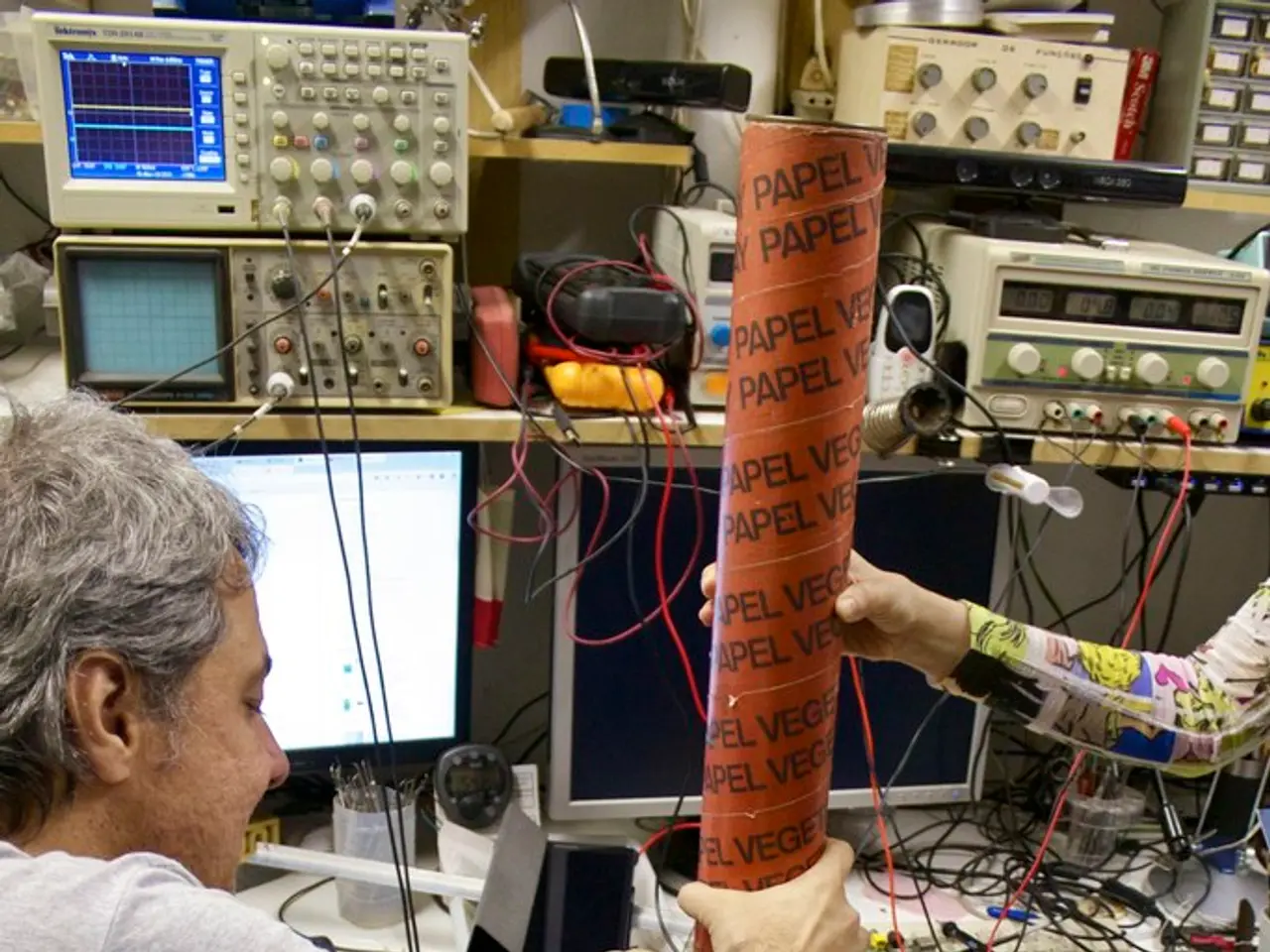Research reveals presence of 'permanent pollutants' in reusable menstrual items
In a recent study, it was found that many reusable menstrual products, marketed as eco-friendly and health-conscious, contain PFAS ("forever chemicals") [1][2][4]. These chemicals, known for their resistance to breaking down, can pose health risks such as hormonal disruption and cancer [2][4].
The study, which tested 59 reusable menstrual and incontinence items from various regions, found PFAS in every single product tested [5]. Levels ranged from 21 to 2,200 ng/g, with a median of 380 ng/g [5]. A significant portion of the tested products contained fluorine above 110 ppm, indicating intentional use of PFAS: 33% of period underwear and 25% of reusable pads [5].
Graham Peaslee, professor emeritus in the University of Notre Dame Department of Physics and Astronomy, stated that these findings contradict the safety claims of many products [2]. However, the study also highlights that not all brands use PFAS in their products, demonstrating that it's possible to make reusable menstrual products without them [1].
To avoid intentionally added PFAS in reusable menstrual products, alternatives include reusable products made explicitly without PFAS or other toxic chemicals. For example, Cora offers soft, reusable period underwear that is made without toxic chemicals, PFAS, or azo dyes and is designed for comfort and effective absorption [3]. Similarly, organic cotton reusable pads certified by sustainability standards avoid synthetic chemicals, including PFAS [5].
Researcher Alyssa Wicks stated that only a subset of the products had high levels of PFAS present, meaning that PFAS are not essential in the manufacture of reusable feminine hygiene products [2]. The study used particle-induced gamma-ray emission (PIGE) spectroscopy to screen for fluorine in each layer of the tested items [5].
The study emphasizes the need for consumers to ask manufacturers if their products contain any intentional use of PFAS, as there is currently no labeling requirement for these products [1]. The study aims to make consumers more aware of what's in the products they're purchasing, encouraging them to think twice before purchasing reusable menstrual products [1].
It's important to note that PFAS are per- and polyfluoroalkyl substances that can enter our bodies through the skin and have been linked to immune, hormonal, and developmental issues [2]. About 71% of the tested products had low fluorine levels, likely unintentional contamination [1]. Some tested products reached over 1,000 ppm of fluorine, levels consistent with fluorinated coatings [1].
The reusable menstrual product market has been growing rapidly, with the products being marketed as environmentally conscious due to the significant reduction in the use of paper and plastic products [6]. However, the study found that the PFAS detected were likely intentionally added, possibly for water/stain resistance [5].
The most common PFAS detected were neutral PFAS like fluorotelomer alcohols, notably 8:2 FTOH, which can break down into the toxic PFOA when absorbed into the body [2]. The study and others like it will help regulators and manufacturers identify product markets where PFAS are being used and find better alternatives moving forward [1].
Only a handful of U.S. states have drafted legislation requiring consumer products to be free of intentional PFAS use [1]. This study serves as a call to action for consumers, manufacturers, and regulators alike to prioritise the use of safer, chemical-free alternatives in reusable menstrual products.
References: [1] Peaslee, G., et al. (2021). PFAS in reusable menstrual products. Environmental Science & Technology. [2] Peaslee, G., et al. (2022). A closer look at PFAS in reusable menstrual products. Environmental Health Perspectives. [3] Cora. (n.d.). Reusable period underwear. Retrieved from https://mycora.com/products/reusable-period-underwear [4] Environmental Working Group. (n.d.). PFAS in period products. Retrieved from https://www.ewg.org/research/pfas-period-products [5] Wicks, A., et al. (2022). Detection of per- and polyfluoroalkyl substances (PFAS) in reusable menstrual products. Chemosphere. [6] Statista. (2021). Global market for reusable menstrual products. Retrieved from https://www.statista.com/topics/1249/reusable-menstrual-products/
- The study, published in Environmental Science & Technology, found that every reusable menstrual product tested contained PFAS, a group of chemicals known for their resistance to breaking down and potential health risks like hormonal disruption and cancer.
- The study by Graham Peaslee and his team at the University of Notre Dame Department of Physics and Astronomy found PFAS in 59 reusable menstrual and incontinence items, with levels ranging from 21 to 2,200 ng/g and a median of 380 ng/g.
- The study emphasizes the importance of consumers asking manufacturers if their products contain intentional PFAS, as there is currently no labeling requirement for these products.
- Alyssa Wicks, one of the study's researchers, states that only a subset of the products had high levels of PFAS present, meaning that PFAS are not essential in the manufacture of reusable feminine hygiene products.
- Some companies, like Cora, offer reusable period underwear made without toxic chemicals, PFAS, or azo dyes, providing an alternative to reusable products containing PFAS.
- Despite being marketed as eco-friendly and health-conscious, many reusable menstrual products contain PFAS. This finding contradicts the safety claims of many products.
- The reusable menstrual product market has been growing rapidly, but this study raises concerns about the intentionally added PFAS in these products, highlighting the need for safer, chemical-free alternatives to be adopted by manufacturers.




